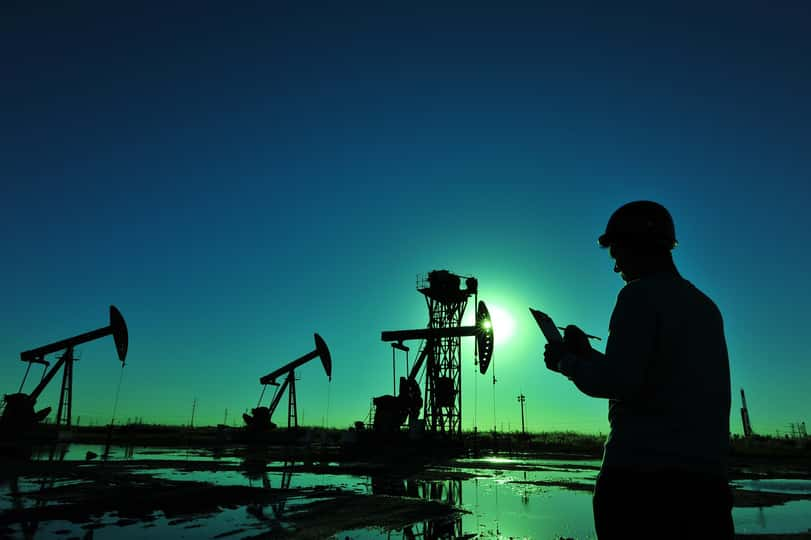-
Gasoline is the most ubiquitous oil product
-
EVs are gaining market share, but gasoline remains the king of automobile fuels
-
The gasoline crack spread is a real-time indicator of refinery profits
-
Valero soars- more room to rally
-
Marathon can continue to post gains
Seasonality is a powerful force in the commodities asset class. During the winter months, the natural gas price tends to peak as heating demand reaches a high for the year. Many other raw materials tend to decline during the coldest periods. As construction demand falls, we often witness price weakness in the industrial commodities sector.
We are now entering the final month of 2021’s first quarter. Spring is just around the corner. The uncertainty of the weather conditions across the fertile plains of the US and other countries in the northern hemisphere that supply the world with agricultural products tends to cause increased price volatility as the markets enter the planting season. In the energy markets, spring is the start of the diving season each year. As the ice and snowmelt and the warm winds of spring begin to blow, drivers tend to put more mileage on their odometers. The demand for gasoline rises in the spring and peaks in the summer vacation period.
In 2021, the impact of seasonality on gasoline prices could be dramatic. Last year, the global pandemic caused unprecedented demand destruction in the energy sector. As vaccines create herd immunity to the virus, people will get back in their cars, on planes, and other modes of transport that they avoided throughout 2020 and early 2021. Oil and oil product prices have been rising on rising demand for fuels and optimism over a continuation of higher requirements.
Companies that refine crude oil into gasoline suffered throughout 2020. Valero Energy Corporation (VLO - Get Rating) and Marathon Petroleum Corporation (MPC - Get Rating) shares have been rallying over the past weeks and months. VLO and MPC could have lots of room on the upside as the surge in fuel demand continue over the coming months as the weather changes and virus fades into our rearview mirrors.
Gasoline is the most ubiquitous oil product
Gasoline is a seasonal and widely consumed oil product. The peak season for gasoline demand begins each year in the spring and runs through the fall as drivers put more mileage on their automobiles when the weather conditions are optimal. 2021 is shaping up to be a far better year for the gasoline market than 2020. As vaccines create herd immunity to COVID-19, life will slowly return to pre-pandemic conditions.
Source: CQG
As the weekly chart highlights, the gasoline price is on a different path in early March 2021 compared to last year. In 2020, the price of the nearby NYMEX gasoline futures contract was below the $1.40 per gallon wholesale level and heading lower. The futures contract reached a twenty-one-year low in April at 37.6 cents per gallon.
In early March 2021, the price was above $2.07 per gallon and heading for higher highs. What a difference a year has made for the world’s most ubiquitous oil product. Gasoline has been trending higher since early November in a steep bullish pattern. The upside targets stand at April 2019 $2.1559 peak, and May 2018, high at $2.2855, the critical technical resistance level for the oil product.
EVs are gaining market share, but gasoline remains the king of automobile fuels
We are seeing more electric vehicles on the road each day. Tesla (TSLA), the leading EV brand, is now the world’s leading carmaker by market cap. Elon Musk’s company’s value is over 2.7 times the second-leading automaker, Toyota.
In the US, energy policy has taken a sharp turn away from the production and consumption of fossil fuels. On his first day in office, President Joe Biden canceled the Keystone XL pipeline project that brings petroleum from the oil sands in Albert, Canada, into the United States. Regulations will increase as the US rejoined the Paris Climate Accords. Crude oil and natural gas production, which reached record highs over the past years, will decline in favor of alternative energy sources.
Meanwhile, the vast majority of automobiles continue to run on gasoline. While that is likely to change in the coming years, the demand for gasoline and other oil products is likely to rise over the coming months as the vaccines allow people to venture out of their homes, return to work, and go on long-overdue vacations.
The gasoline crack spread is a real-time indicator of refinery profits
The gasoline crack spread reflects the margin for processing a barrel of crude oil into the fuel that powers our cars. The gasoline refining margin is a real-time indicator from two perspectives. First, it tells us about the fundamental equation’s demand side for the fuel’s primary ingredient, crude oil. As gasoline prices rise, the requirements for petroleum move higher. The gasoline crack spread is also a barometer of earnings for companies that process oil into the fuel. A rising crack spread means that refinery profits increase.
Source: CQG
In early March 2017, the high in the gasoline refining spread was at a high of $19.20. At the same time in 2018 and 2019, the peaks were $19.36 and $19.67, respectively. Last year, as the coronavirus concerns were rising, the gasoline crack traded to a high of $18.93 during the first week of March. At the end of last week, the spread was trading at the $20.96 per barrel level, the highest level since 2016 at this time of the year.
March is a critical month for gasoline production as refineries gear up for the upcoming driving season. With the processing spread rising, shares of two of the leading US refining companies have been soaring over the past weeks.
Valero soars- more room to rally
Valero Energy Company (VLO - Get Rating) is a leading US refiner of crude oil into oil products. At the $79.03 level at the end of last week, VLO’s market cap was just below the $32.3 billion levels. Over four million VLO shares change hands on an average trading session. The company pays its shareholders a $3.92 dividend, which translates to a 4.96% yield. The dividend yield is well above the stock market’s average.
Source: Barchart
As the chart shows, the all-time high in VLO came in 2018 at $126.98 per share. At the height of the risk-off price action caused by the pandemic in March 2020, the shares fell to a bottom of $31.00. Since then, VLO has been making higher lows and higher highs. In late October 2020, the shares traded to a low of $35.44. Since then, they have more than doubled. The upside technical price target stands at the pre-pandemic November 2019 $101.99 high.
Source: Yahoo Finance
As of the end of last week, four of six Wall Street companies were bullish on VLO shares, with only one bear and another neutral forecast for the stock.
The trend in gasoline and gasoline crack spreads supports more gains in VLO’s shares as we head towards the 2021 driving season.
Marathon can continue to post gains
Marathon Petroleum Corporation (MPC - Get Rating) is another leading US oil refiner. At $57.32 per share, MPC has a $37.331 billion market cap and trades an average of over six million shares each day. MPC’s dividend is at the $2.32 level or around 4.05%, also above the market’s average dividend yield.
Source: Barchart
The chart illustrates that the all-time high was in 2018 at $88.45 per share. Last March, MPC fell to a low of $15.26. The stock reached a higher low of $26.56 in late September. Like VLO, MPC has more than doubled since the September low at the end of last week. The first level of technical resistance stands at the October 2019 $69.65 high, which is the gateway to the 2018 all-time peak.
Source: Yahoo Finance
Five of six Wall Street companies are bullish on MPC with only one neutral forecast.
Gasoline, gasoline crack spreads, and VLO and MPC shares have come a long way from the lows in March 2020. Increased demand for the fuel as the global pandemic fades into our rearview mirrors could push energy prices and refinery profits higher over the coming weeks and months. VLO and MPC could have lots more upside as people get back in their cars and venture out after being cooped up for the past year.
Want More Great Investing Ideas?
9 “MUST OWN” Growth Stocks for 2021
How to Ride the 2021 Stock Market Bubble
5 WINNING Stocks Chart Patterns
K.I.S.S. for the March Stock Market
VLO shares were trading at $80.66 per share on Tuesday morning, up to $0.10 (+0.12%). Year-to-date, VLO has gained 44.78%, versus a 4.00% rise in the benchmark S&P 500 index during the same period.
About the Author: Andrew Hecht

Andy spent nearly 35 years on Wall Street and is a sought-after commodity and futures trader, an options expert and analyst. In addition to working with StockNews, he is a top ranked author on Seeking Alpha. Learn more about Andy’s background, along with links to his most recent articles. More...
More Resources for the Stocks in this Article
| Ticker | POWR Rating | Industry Rank | Rank in Industry |
| VLO | Get Rating | Get Rating | Get Rating |
| MPC | Get Rating | Get Rating | Get Rating |






